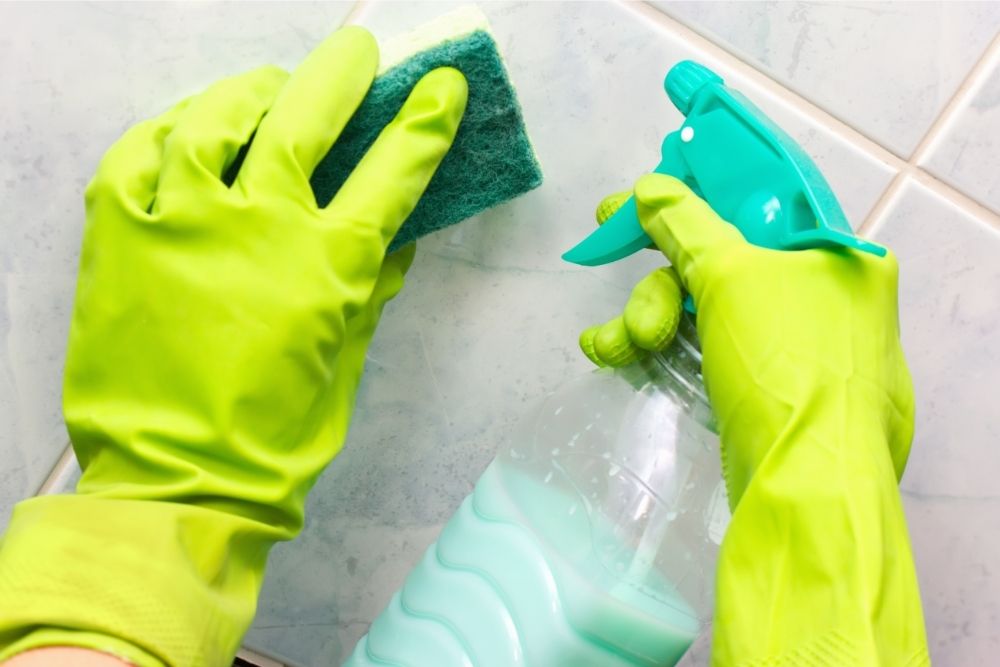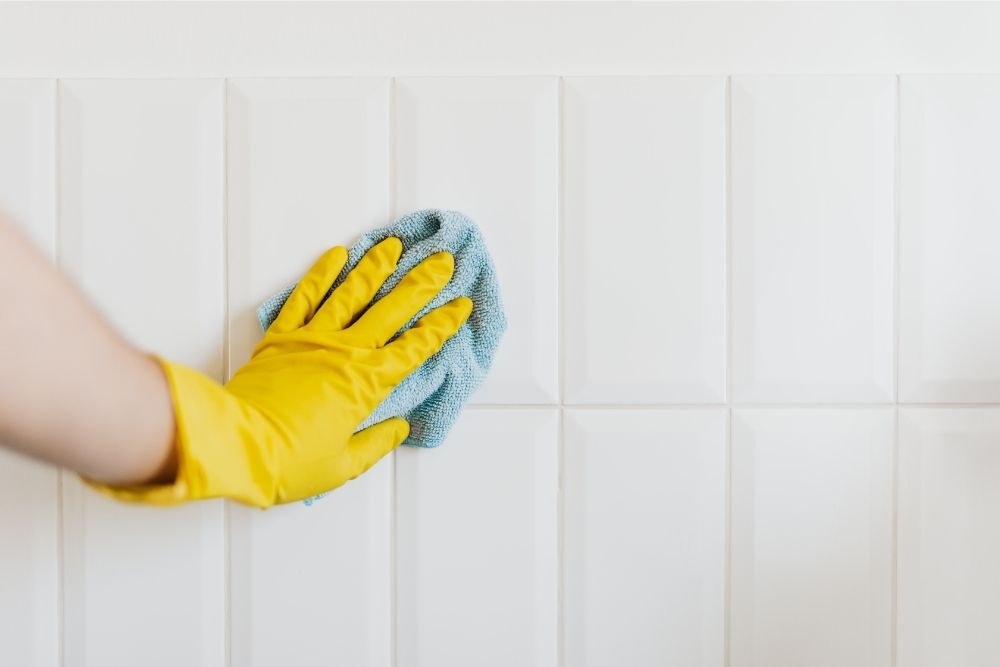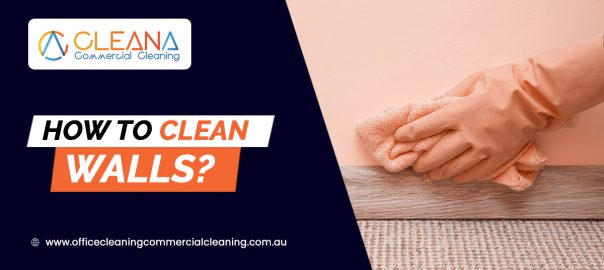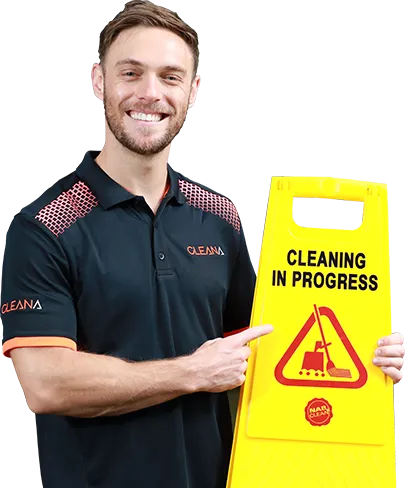There are a lot of methods to use when it comes to cleaning your walls, depending on the type of paint and specific stains.
If your home has particular areas that are more prone to dirt build-up, grease residue from food, or even small fingerprints where children walk by, then you are probably wondering how to approach cleaning the walls.
However, before diving in and using the same cleaning product across different surfaces, it is worth considering the effect that cleaning products can have on your walls. This involves thinking about what type of paint was used, whether it was glossy or oil-based, or if you have a brick or tiled walls.
There are a lot of different approaches to consider because of the many finishes that are achieved using different textures and paint. This guide of professional commercial cleaners will help you decide on the best approach to take when it comes to cleaning your walls, depending on the surface, the type of stain you want to remove, and some suggested products.
Wall Surface
No two homes are exactly the same, which is why we have addressed how different textures and finishes on a wall can determine the best way to clean it. Some of the more commonly used finishes within most modern households are tiles and different finishes of paint.
However, we have taken the time to discuss several surfaces in order to encourage you to take a closer look at the walls around your home.
Tiles
A lot of houses and apartments have tiles on some walls, these are usually seen in the bathroom or kitchen because they are a lot easier to wipe down and keep clean than paint or wallpaper might. One of the best ways to preserve the overall quality and shine of tiles is to use a clean, soft rag or sponge.
Using warm, soapy water made with your regular dish soap, gently wipe down the entire surface and dry using a clean, dry towel. This can remove a lot of grease and general dirt build-up without damaging the shiny surface of the tiles.
Of course, bathroom tiles often need a little more attention. This is because the grout between the tiles is more exposed on a daily basis to moisture build-up that can eventually turn into mold if it is left.
It is worth researching what type of grout has been used in order to decide the best way to scrub it clean. A lot of cleaning products use vinegar as a main ingredient, which can actually damage the quality of tiles and grout with regular use because of the acidity.
However, bathroom tiles are typically made to be a little more hard-wearing than those in the kitchen, which is why you could consider using a heavy-duty grout cleaner in places that need it.

Wallpaper
While modern homes don’t really include wallpaper anymore, it is worth considering how there are different types of wallpaper that are textured or not.
Depending on whether there is a glossy finish to the design or if it is more simplistic, will determine the recommended cleaning products to use.
The majority of modern wallpapers can be easily cleaned using disinfectant wipes, however, it could be worth testing the specific brand of wipes on a small section of the wall beforehand to see if it changes the finish.
Paint
It is a well-known fact that not all paints are created equal, so it is worth checking what kind of paint is used on the walls you want to clean.
For example, window frames, doors, and occasionally used in the kitchen are considerably more durable than what you might have used within other rooms of the house.
High-traffic areas usually use glossy finishes on their paint, because it is significantly more durable than traditional paint. Because of this, it is a lot easier to clean. Glossy paints have been made for heavier use, which is why they are usually seen in busier corridors or rooms within a house.
They are significantly easier to clean because they can easily be wiped using disinfectant wipes or warm, soapy water. Make sure that you thoroughly dry the area after cleaning in order to preserve the quality of the paint.
Stains
Another thing to consider is what type of stain you want to remove. Whether it is general dirt that has built up over time, crayons from especially creative children, grease, or permanent marker, it can determine the best cleaning method. It is recommended that you thoroughly clean the entire wall before attempting to tackle smaller stains.
This way, the stain has had a chance to shrink down and react to the dish soap and warm water combination, which will hopefully make it easier to remove.
More stubborn stains can be tackled using baking soda and water paste because they should not damage the wall underneath while getting rid of the stain.
However, you should consider testing this solution on a small patch of the wall before using it on a large area, in case you have concerns about the paint, tiles, or wallpaper.

What You Need
You will need a soft, non-abrasive sponge or washcloth. Microfiber cleaning cloths are one of the best things you can use around the home.
This is because they are nonabrasive and very soft. They are also a great purchase for a lot of purposes. These include cleaning other surfaces, dusting, polishing, and removing fingerprint marks from screens.
Dust the walls thoroughly before cleaning to remove larger chunks of dirt and prevent dust particles from being smeared into the wall. There is more flexibility with this because it is a dry process.
This means that you can use whatever materials you have on hand at the time to remove the dust and larger chunks of debris.
Try to do a test with the formula used on a small area beforehand, so that you can see how it dries, and if it compromises the quality of the paint at all. This can allow you to clean your walls in the best possible way, without causing any damage to the wall.
Frequently Asked Questions
How Can I Make My Wallpaper White Again?
If your wallpaper was originally white and has stained over time, you could mix a baking soda and water paste together. Using a clean cloth, gently apply the mixture and let it sit for around fifteen minutes before cleaning it off.
How Can I Clean My Walls That Have Latex Paint On?
Because latex-based paint is some of the most temperamental, it is recommended that you use warm water without soap. This can prevent irritation and preserve the paint underneath.
How Do I Remove Wax Crayons?
A: There are a lot of ways that you can tackle wax crayons on the walls, but one of the best methods is to clean the entire surface with warm, soapy water to allow the wax a chance to melt slightly. Then, you can either create a baking soda paste or attempt to gently scrape off the crayon.
Summary
There are a lot of things to consider when it comes to cleaning walls, and it is worth taking the time to think about the type of surface you want to clean.
Make sure that you have prepared the area appropriately by thoroughly dusting it before using warm water on the walls. More stubborn stains can be removed using a baking soda solution.


